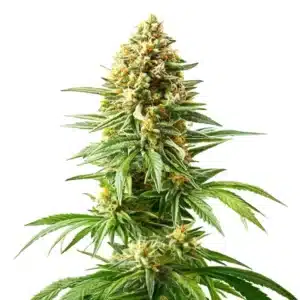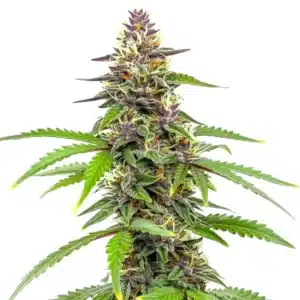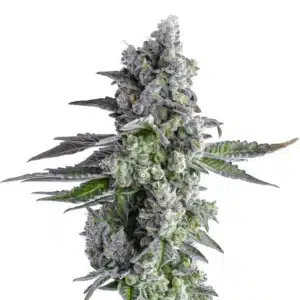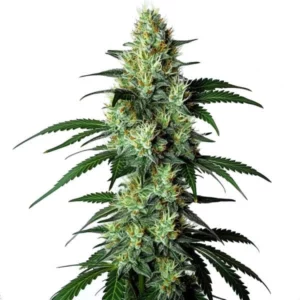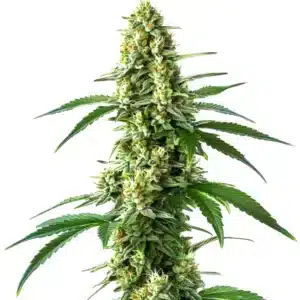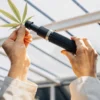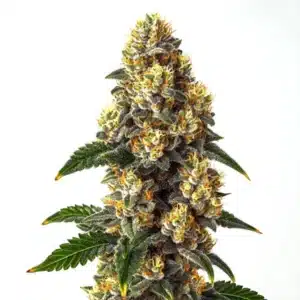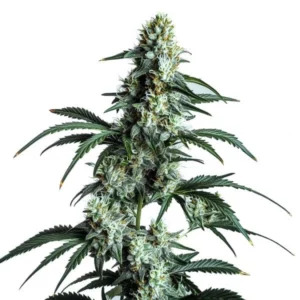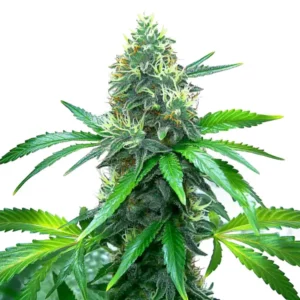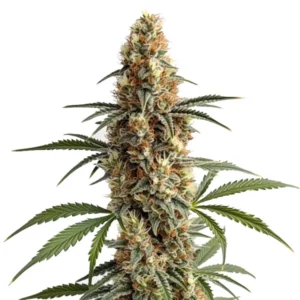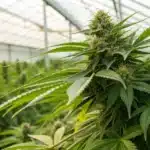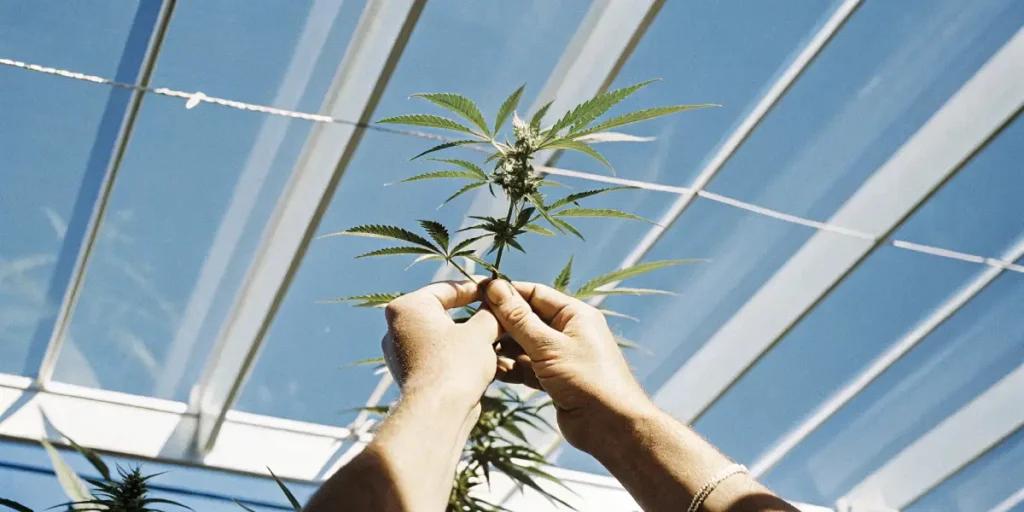
Cannabis Pruning and Hormone Response
Pruning is a vital part of cultivating healthy cannabis plants. When done correctly, it can significantly influence cannabis pruning and hormone response. The way plants respond to pruning involves complex hormonal changes, which can affect growth, yield, and overall health. Knowing these changes can help optimize your growing practices.
One of the main cannabis pruning techniques for hormonal balance is removing certain parts of the plant to stimulate growth elsewhere. This practice helps redistribute energy, encouraging the plant to focus on developing strong branches and buds. The effects of pruning on cannabis hormone production are profound, often leading to more robust plants that are better equipped to handle stress.
Recommended Strains
Afghan Kush x Blueberry
|
|
THC | 18% - 20% (Medium) |
|
|
Type | Feminized |
|
|
Yield | Low |
|
|
Phenotype | 70% Indica / 30% Sativa |
Amnesia Blue Headband
|
|
THC | 10% - 20% (Medium) |
|
|
Type | Feminized |
|
|
Yield | Medium |
|
|
Phenotype | 50% Indica / 50% Sativa |
Timing is crucial when pruning cannabis. The optimal pruning time for cannabis hormone response is during the early vegetative stage. This is when the plant is most capable of redirecting its growth hormones efficiently. By strategically pruning at this stage, you can guide the plant’s development in a way that maximizes its potential.
Cannabis Pruning Techniques for Hormonal Balance
There are several pruning methods that promote hormonal balance in cannabis plants. Topping is one of the most common techniques, where the main stem is cut to encourage the growth of two new branches. This method not only increases yield but also enhances the plant’s ability to manage nutrients and hormones.
Another effective technique is defoliation, which involves removing fan leaves that block light from reaching lower branches. This method can lead to a more even distribution of light and hormones across the plant. It’s essential to perform defoliation carefully, as overdoing it can stress the plant and negatively impact its hormone levels.
Fimming is another technique that is often used in cannabis pruning and hormone response management. Similar to topping, fimming involves removing a portion of the main stem but leaves more of the plant intact, which can lead to even more branching than topping. This method allows for a greater spread of hormones throughout the plant, enhancing its overall health and growth potential.
Lollipopping, a technique where lower branches and leaves are removed, is also beneficial for managing the effects of pruning on cannabis hormone production. By focusing growth on the upper sections of the plant, this method helps to direct energy and hormones to the parts of the plant that are most productive, optimizing yield and plant health.
Practical Examples of Pruning Techniques
For instance, using the topping method on a strain like Bubba Kush can result in a bushier plant with more bud sites. This strain responds well to topping, as it naturally grows with a strong central cola that can easily be split into two.
Defoliation works wonders with strains such as Blue Dream. By removing some of the larger fan leaves, you can enhance light penetration to lower branches, promoting even growth and improved hormone distribution.
For a strain like Gelato, experimenting with both fimming and topping can yield impressive results. The combination of these techniques can create a plant with a more intricate branching system, allowing for better light exposure and improved cannabis plant hormone changes post-pruning.
If you’re working with a strain like Sour Diesel, implementing lollipopping can significantly enhance the plant’s growth. This technique ensures that the plant’s energy is concentrated on the productive top branches, maximizing the impact of pruning on cannabis growth hormones and yield.
Promos & Deals
Impact of Pruning on Cannabis Growth Hormones
Pruning directly impacts cannabis plant hormone changes post-pruning. Hormones like auxins and cytokinins play a crucial role in how a plant grows and responds to stress. Auxins, found in the tips of branches, are responsible for vertical growth. When you prune a branch, auxin levels in that area drop, allowing cytokinins to promote lateral growth.
This shift in hormone balance encourages the plant to grow wider rather than taller. As a result, the plant develops multiple colas instead of just a single main one. This effect can be particularly beneficial for indoor growers looking to maximize space and yield.
The impact of pruning on cannabis growth hormones is also evident in how the plant allocates its resources. By reducing the dominance of auxins, pruning allows for a more distributed growth pattern. This can lead to increased nutrient uptake and an overall healthier plant, capable of supporting a more substantial yield.
Moreover, the changes in hormone levels post-pruning can improve the plant’s resilience to environmental stressors. By promoting a more balanced growth structure, the plant becomes better equipped to withstand fluctuations in light, temperature, and humidity, ensuring robust growth throughout the growing season.
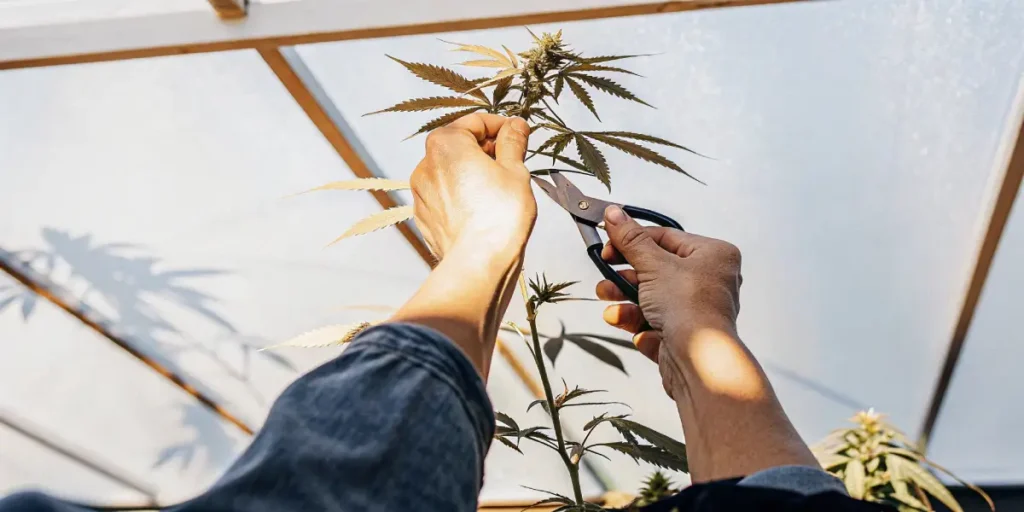
Real-Life Impact of Pruning on Hormones
Consider a situation where you’ve pruned a plant during its vegetative stage. The immediate reduction in auxins triggers the plant to distribute its resources to other parts, enhancing growth in those areas. This redistribution is key to achieving a balanced and productive plant.
For example, when you prune a Gelato plant, the impact of pruning on cannabis growth hormones becomes evident. The plant tends to become bushier, with more bud sites and stronger branches. This is due to the changed hormone dynamics post-pruning.
In another instance, pruning a plant like OG Kush during its early growth phase can dramatically alter its growth trajectory. The cannabis plant hormone changes post-pruning encourage a denser canopy and better resource allocation, leading to a more vibrant and productive plant.
These real-life examples highlight the importance of knowing cannabis pruning and hormone response. By observing how different strains react to pruning, growers can tailor their techniques to maximize plant health and yield, making informed decisions that enhance their cultivation practices.
Optimal Pruning Time for Cannabis Hormone Response
The timing of pruning can dramatically affect how a plant responds hormonally. Early pruning during the vegetative stage sets the foundation for robust growth. It’s during this time that the cannabis plant is most adaptable to changes, allowing it to rearrange its hormones effectively.
Pruning during the flowering stage is less ideal as it can stress the plant, leading to potential hormonal imbalances. However, light pruning can still be beneficial to remove any dead or yellowing leaves, which can otherwise drain the plant’s resources.
Choosing the optimal pruning time for cannabis hormone response not only influences the plant’s current growth but also its future productivity. Early pruning interventions can prevent issues related to overcrowding and poor light penetration, setting the stage for a high-yielding harvest.
It’s important for growers to monitor their plants closely, as the best time to prune can vary slightly depending on environmental conditions and specific strain characteristics. Adapting your approach to the plant’s unique growth patterns ensures that the effects of pruning on cannabis hormone production are maximized.
Timing Pruning for Maximum Hormonal Benefit
Consider pruning a Bubba Kush plant early in its vegetative phase. This early intervention encourages the plant to focus on lateral growth, enhancing its structure for potentially higher yields.
On the other hand, waiting too long to prune a Blue Dream plant might not yield the same benefits. The plant could become too tall and unmanageable, with hormones primarily focused on maintaining height rather than developing new buds.
By knowing and implementing the optimal pruning time for cannabis hormone response, growers can ensure that their plants develop a strong and balanced structure. This strategic timing helps in managing the plant’s hormonal shifts effectively, setting the groundwork for a bountiful harvest.
Additionally, aligning your pruning schedule with the plant’s natural growth cycles minimizes stress and maximizes the plant’s ability to adapt to changes. This proactive approach can lead to healthier plants and more consistent yields, highlighting the critical role of timing in cannabis cultivation.
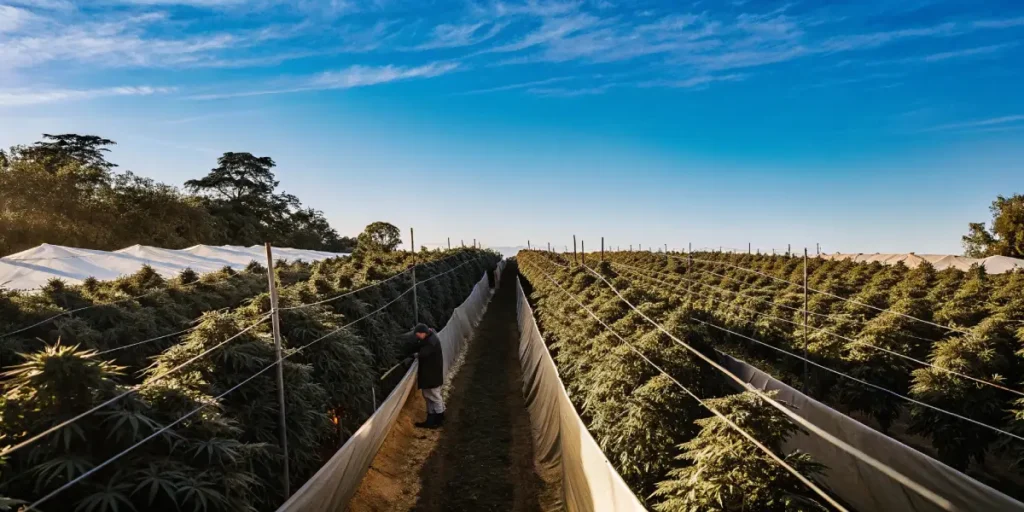
FAQs
What are the best cannabis pruning techniques for hormonal balance?
The most effective techniques include topping and defoliation. Topping helps redistribute growth hormones by cutting the main stem, encouraging lateral growth. Defoliation, on the other hand, removes excess leaves to ensure light reaches lower branches, balancing the plant’s energy and hormone distribution.
Both methods require careful execution to avoid stressing the plant. By using these techniques, you can enhance your plant’s natural ability to manage its hormones, leading to a healthier and more productive crop.
Besides to topping and defoliation, techniques like fimming and lollipopping can further enhance cannabis pruning and hormone response. These methods target specific growth patterns, allowing growers to optimize their plants’ hormone distribution for improved growth and yield.
Knowing and applying these cannabis pruning techniques for hormonal balance can significantly impact the overall success of your cultivation efforts. By promoting a balanced growth structure, these methods ensure that your plants have the resources they need to thrive.
How does pruning affect cannabis hormone production?
Pruning impacts hormone levels like auxins and cytokinins. Cutting a branch reduces auxin levels, which encourages the plant to focus on lateral growth. This shift allows the plant to develop multiple colas and a more even structure, ultimately boosting yield.
Knowing these hormonal changes can help you optimize your pruning strategy, ensuring that your plants grow to their fullest potential with robust bud production.
The effects of pruning on cannabis hormone production are not only limited to growth but also extend to the plant’s resilience to stress. By facilitating better nutrient and light distribution, pruning enhances the plant’s ability to overcome environmental challenges, promoting sustained health and productivity.
Incorporating these insights into your cultivation practices can lead to a more nuanced approach to cannabis pruning and hormone response. By aligning your methods with the plant’s natural hormonal cycles, you can unlock the full potential of your crop.
When is the optimal pruning time for cannabis hormone response?
The best time to prune is during the early vegetative stage. This is when the plant is most flexible in redirecting its hormones and energy. Early pruning sets the stage for a balanced growth pattern and maximizes the plant’s yield potential.
Avoid heavy pruning during the flowering stage, as it can cause stress and hormonal imbalances. Light pruning to remove dead leaves can still be beneficial, but major cuts should be avoided once flowering begins.
Recognizing the optimal pruning time for cannabis hormone response is crucial for achieving a successful harvest. By intervening early, you can guide the plant’s growth trajectory, ensuring that it develops a sturdy structure capable of supporting a substantial yield.
This knowledge empowers growers to make informed decisions that align with the plant’s natural growth cycles, enhancing the overall impact of pruning on cannabis growth hormones and optimizing the plant’s potential.
What changes occur in cannabis plant hormones post-pruning?
Post-pruning, plants experience a decrease in auxins, which are concentrated in the tips of branches. This reduction allows cytokinins to promote lateral bud growth, creating a bushier plant with multiple colas.
This shift is crucial for achieving a balanced plant structure that can support more buds and increase overall yield. Knowing these hormonal changes can enhance your cultivation strategy.
The cannabis plant hormone changes post-pruning also involve a reallocation of nutrients and energy, which supports the development of a more robust and resilient plant. By knowing these dynamics, growers can better anticipate the plant’s needs and adjust their care accordingly.
These hormonal adjustments are a vital component of successful cannabis cultivation, as they directly influence the plant’s growth patterns and yield. By leveraging this knowledge, growers can optimize their pruning techniques to maximize the benefits for their crop.
How does pruning impact cannabis growth hormones and overall plant health?
Pruning strategically can improve plant health by encouraging a more balanced distribution of growth hormones. This balance leads to a more robust structure capable of supporting larger yields. Proper pruning techniques eliminate weak branches, allowing the plant to focus resources on stronger, more productive areas.
Moreover, by managing the plant’s growth pattern, you reduce the risk of disease and improve air circulation, which are vital for maintaining a healthy crop. This holistic approach to pruning ensures that your plants thrive throughout their lifecycle.
The impact of pruning on cannabis growth hormones extends beyond immediate growth benefits. By fostering a balanced hormone distribution, pruning helps to mitigate the risk of pests and diseases, contributing to the long-term health and vitality of the crop.
Additionally, strategic pruning can enhance the plant’s aesthetic appeal and market value, making it a crucial aspect of both personal and commercial cannabis cultivation. This comprehensive approach ensures that your plants not only survive but thrive, yielding the best possible results.


